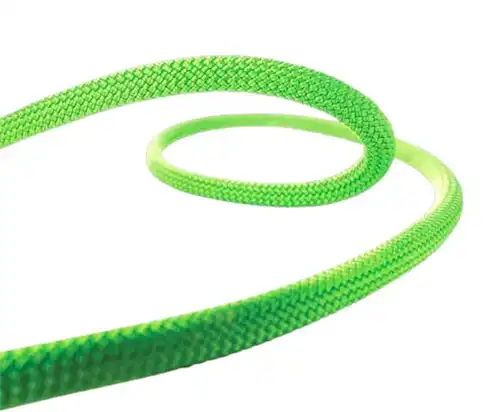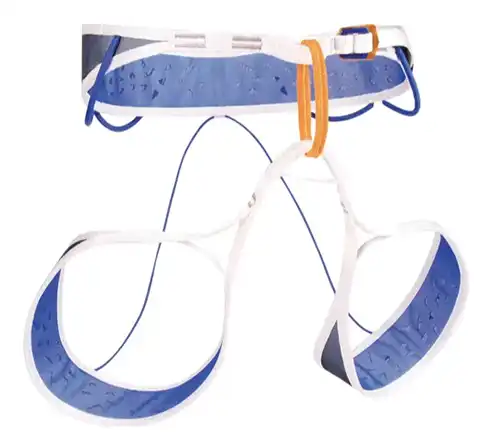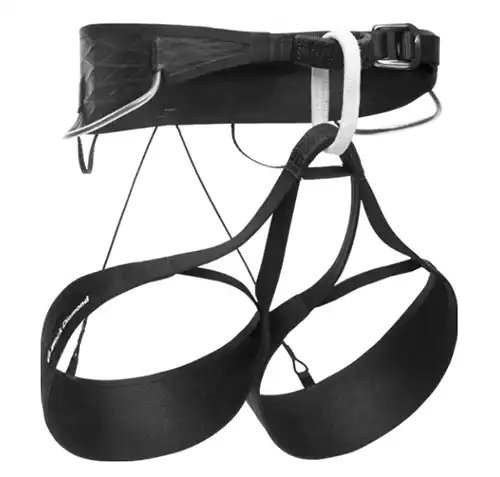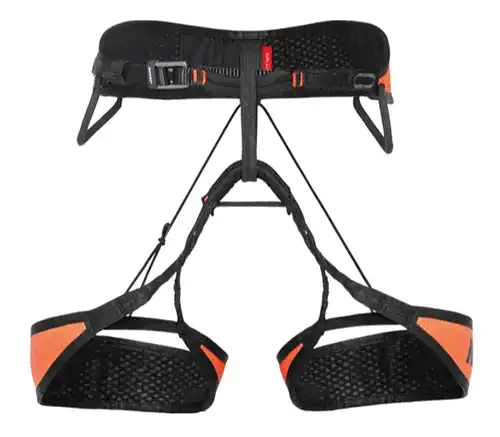Highly technical materials and sophisticated production processes allow mountain sports equipment to become increasingly lighter. Ropes, climbing harnesses and safety devices also shed pounds. This article shows what this means for climbing, what the advantages of ultralight material are and where it reaches its limits.
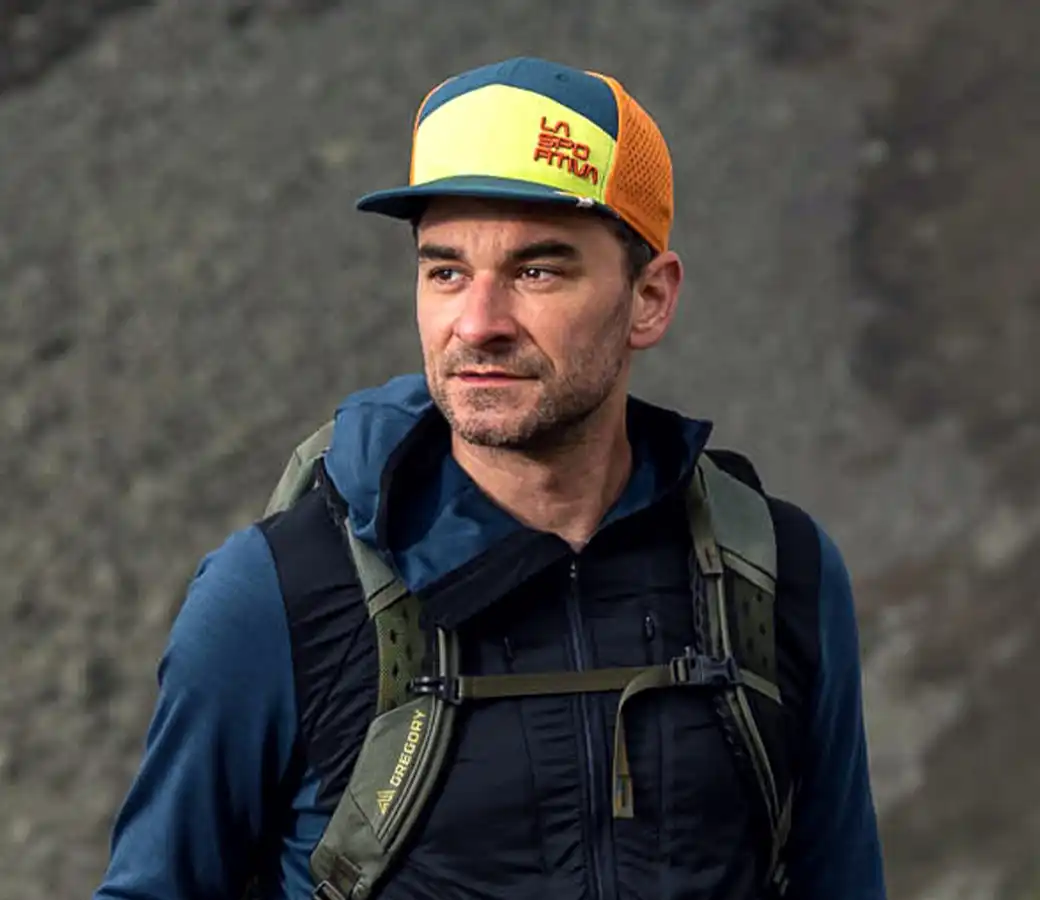
A post by
bächli mountain sports
The content specialist Fabian Reichle is himself an enthusiastic mountain athlete and enjoys being outdoors as often as possible. Benefit from the experience of Bächli Bergsport and take advantage of our expert advice. We are looking forward to your visit!
Ultralight climbing material – you’ll find out in this article
- The rope
- The climbing harness
- That's how the professionals do it
- The climbing shoes
- The belay device and the carabiners
- Weight at what price?
Hemp rope, nail shoes and a wool coat: the material from the first decades of alpinism was not only questionable in terms of protection, it was also extremely heavy. Those times are long gone. In every discipline of mountain sports, the equipment is like a helium balloon - with symbolic air upwards.
If you transport less weight, you use less energy. Light equipment therefore follows a certain degree of logic and is based on the needs of mountain athletes. Especially in the vertical area, where gravity is most noticeable, it makes sense to invest in light climbing material.
But: Easy for the sake of being easy is not always advantageous and, at a certain point, even dangerous. Or as the American big wall pioneer Jim Bridwell used to say: “It's a thin line between boldness and stupidity.”
At some point, limits are reached in the manufacturing process and the handling of ultra-light equipment does not necessarily have to be better. Below is a look at the most important, lightweight equipment for climbing - with a critical eye on their suitability.
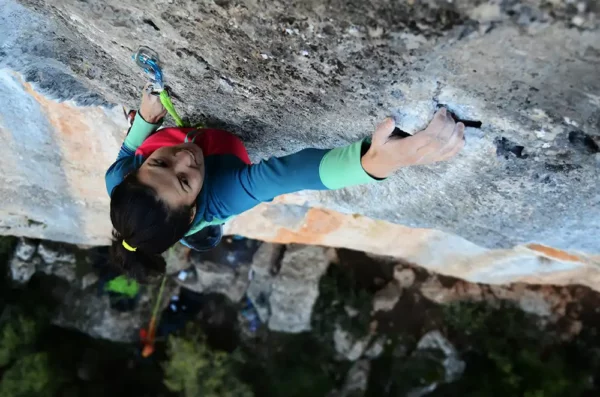
The rope
One of the greatest achievements in climbing, and even mountain sports in general, was the kernmantle-based, synthetic rope. Compared to its technical predecessors, it only offers advantages: it is more robust, more dynamic and consequently safer. Depending on the version, it is also more weatherproof and lighter.
Weight can be saved on a rope primarily through two factors: the length and the diameter. While the former leaves little room for maneuver depending on the climbing project, the latter can often save a lot of grams. It is exciting to observe that the trend towards ever thinner ropes is currently leveling off, as handling is not always trivial and wear is relatively high.
Climbing ropes range between 9,2 and 9,8 millimeters in diameter. This spectrum offers a lot of safety and is pleasant to use. Caution: Thicker ropes can also become cumbersome with certain safety devices. Anyone who can cope with thin ropes and can ignore the somewhat reduced longevity will ultimately be more light-footed, especially when transporting ropes.
A selection of ultralight (single) ropes:
- Beal Opera GD Unicore
With a diameter of 8,5 millimeters, it is a very thin, but therefore the lightest single rope in the world. Also meets the standards as a half and twin rope. - Edelrid Swift Eco Dry
Sustainably interesting rope that has a diameter of 8,9 millimeters. - Mammut Crag Sender Dry
Relatively light weight with a diameter of 9 millimeters.
The climbing harness
Aside from shoes, the harness is the only climbing-relevant material that hugs the body. If you want to save weight, you primarily forego comfort. However, a comfortable fit is essential, especially on long routes, which is why big wall harnesses, for example, tend to be heavily padded, while competition models usually do without it completely.
The choice should therefore be based on your own climbing preferences. A few grams less is not worth it if the time on the route becomes an uncomfortable torture. Important: The weight differences between alpine and sport climbing harnesses are fundamentally immense. The supposedly brilliant idea of using a super-light alpine climbing harness in vertical projects prone to falls is life-threatening.
In the area of extremely light sport climbing harnesses, there are, for example:
Black Diamond Airnet
Was developed especially for the Olympic Games. Also available as ladies model.
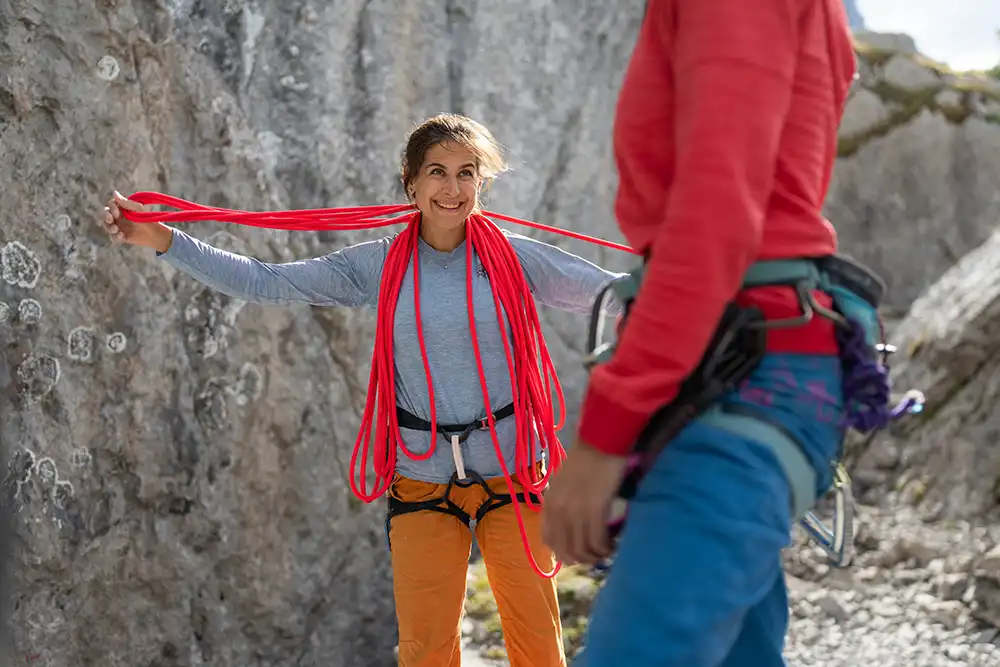
That's how the professionals do it
With experience comes knowledge. And who gets more out of it than professional alpinists and climbers? Roger Schäli is at home in vertical terrain with 56 ascents of the Eiger north face, successful expeditions in Patagonia and numerous first ascents. Its weight-saving potential lies in the carabiners:
For many people it is a no-go not to have a screw carabiner on the self-belay. However, if my snap carabiner is properly loaded and I take appropriate care of it, I prefer this lighter solution.
Roger Schäli
He replaces his quickdraws with a carabiner and a 60 cm Dyneema sling. He threads this through the hook in the climbing route and clips it back into the carabiner. This creates a super light 30 cm express.
Otherwise, Schäli largely avoids unnecessary food and water. This is where he sees the greatest potential for weight savings. A half-liter bottle on his climbing harness does the trick for him - he can fill it up as needed on the go.
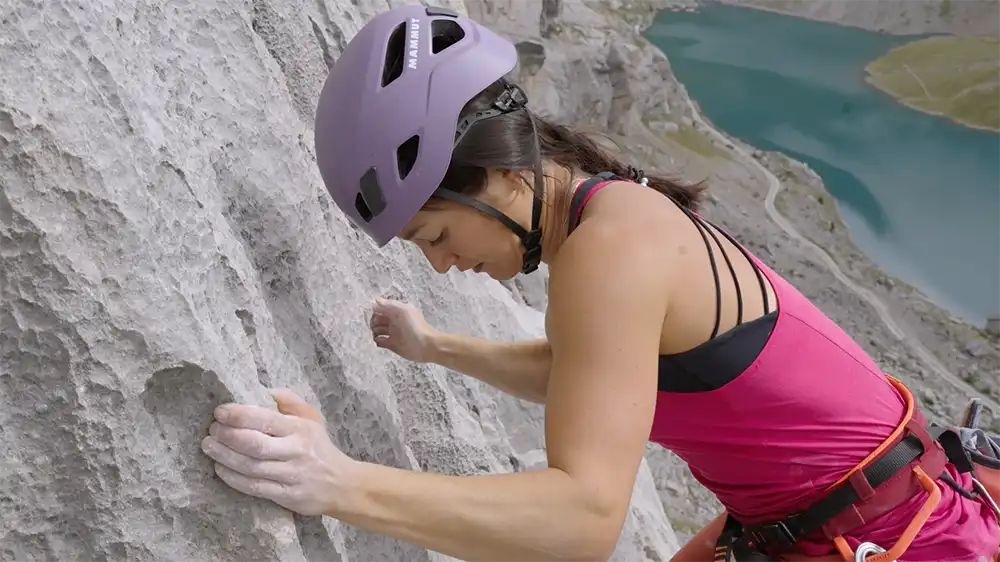
Katherine Choong also maintains a minimalist approach and, after her competitive career in sport climbing, can be found more often on difficult multi-pitch routes. She is also the first Swiss woman to climb a 9a. Your credo:
I try to take the exact number of expresses with me for a route and avoid all other unnecessary equipment such as Maillons Rapides.
Katherine Choong
She also goes without a backpack. At least while climbing. She always follows this. When it comes to the material that is essential during the climb, she pays attention to competition-oriented models in order to save weight.
Learn from the best and still make your own decisions. The extent to which laypeople can learn practical tips from professionals remains a matter of personal discretion.
The climbing shoes
Choosing a climbing shoe based solely on its weight would be a mistake. Many other factors play a more important role. Fit, downturn, symmetry, closure system, sole quality or rubber mixture, hook ability and more - all of this ultimately determines the success of the climbing tour rather than a few grams saved.
However, there are climbing shoes that are surprisingly light. Manufacturers save primarily on the sole thickness. This also makes the shoe more sensitive, which can be particularly useful for delicate bouldering problems. However, the wear and tear is higher.
Lightweight climbing shoes on the market are:
- La Sportiva mantra
A model for advanced users especially for the hall. At 300 grams per pair, one of the lightest shoes ever. - Tenaya Indalo
320 grams, asymmetrical, strong downturn and yet surprisingly comfortable. - Red Chili Spirit
An all-rounder that can be used anywhere from indoor training to multi-pitch routes.
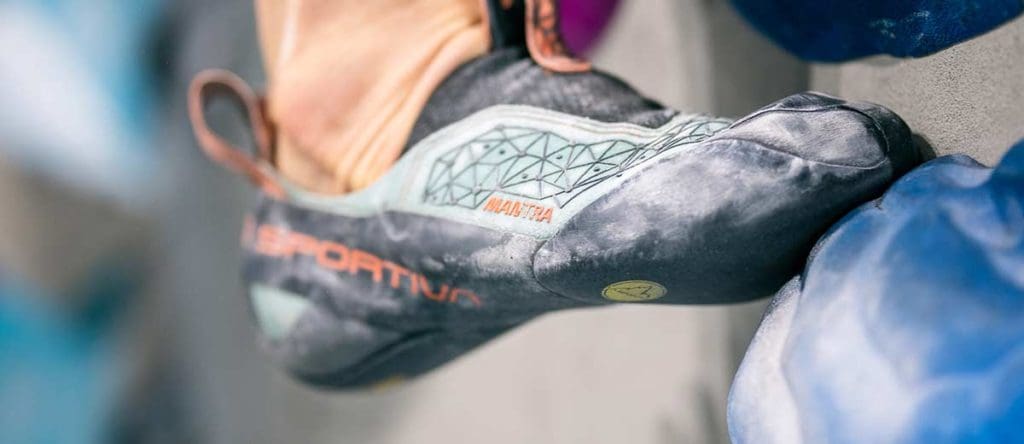
The belay device and the carabiners
First of all: It is difficult to make a recommendation in the area of belay devices because the different types not only function completely differently, but also have corresponding weight fluctuations. A simple tuber is logically lighter than a complex device with a backstop.
Apart from that: The Grigri from Petzl - probably the most common belay device - weighs just 175 grams. With the updates since its market launch in 1991, it has lost around a fifth of its weight and become a quarter smaller. So something has definitely happened here.
The same applies to carabiners. Hardly any other product has become so noticeably lighter. Modern aluminum, new manufacturing processes and sophisticated engineering knowledge bring real added value. The safety of the material remains high - so if you still have older carabiners and exes lying around at home and want to noticeably lose weight: this is worth investing in. Almost all carabiners are now at a level that can be assigned to the feather-light weight category.
Some examples:
- DMM Shadow Kwiklock
Screw carabiner with automatic locking system. - Wild Country Xenon HMS
Large pear-shaped HMS carbine. - Mammut transmitter keylock
Express set with two keylock carabiners.
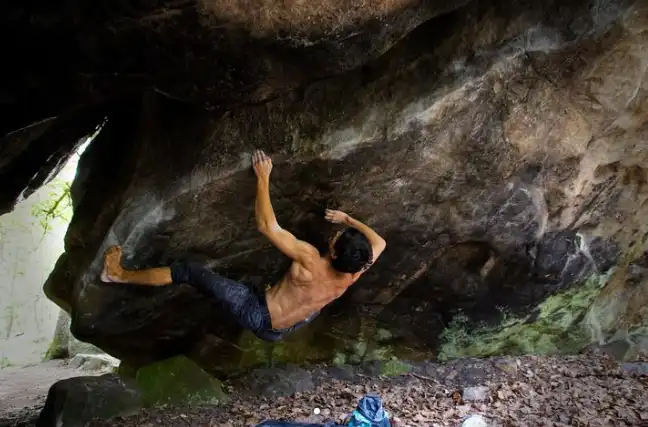
All the rest
Anyone who doesn't climb free solo or wants to emulate the Appenzell naked hikers will inevitably be confronted with additional material. Here too, the credo is: always easier. This is how the climbing backpack weighs, for example Stache UL by Blue Ice just 340 grams - with a volume of 25 liters and hardly any mountain sports amenities such as ice ax holders and the like.
A lot is happening in the clothing sector, especially around the trend of trail running and speed hiking. The Comp series from La Sportiva is emblematic of this. Shorts and shirt is available at Bächli Bergsport.
Weight at what price?
Traveling lighter has advantages. But at some point a limit is reached. If a flyweight comes at the expense of durability and resilience, this is annoying or even dangerous - in the case of a weatherproof jacket, for example - when it comes to safety-relevant material.
There is also mountain sports equipment where light material is actually disadvantageous. Picks or hammers are examples of this. These are more efficient to use with a solid base weight.
There is more on the topic of weight in mountain sports and where it makes sense in the detailed article in Inspiration, the magazine from Bächli Bergsport.

About Bächli mountain sports
Bächli mountain sports is the leading Swiss specialist store for climbing, mountaineering, expeditions, hiking, ski touring and snowshoeing. Bächli Bergsport currently offers its customers expert advice and high-quality service at 13 locations in Switzerland. Bächli Bergsport publishes on Lacrux at regular intervals exciting contributions to the topics climbing, bouldering and mountaineering.
That might interest you
- Sits well: This is what you need to know about climbing harnesses
- Children's climbing shoes: special finches for the first vertical steps
+ + +
Credits: Cover picture Bächli mountain sports


